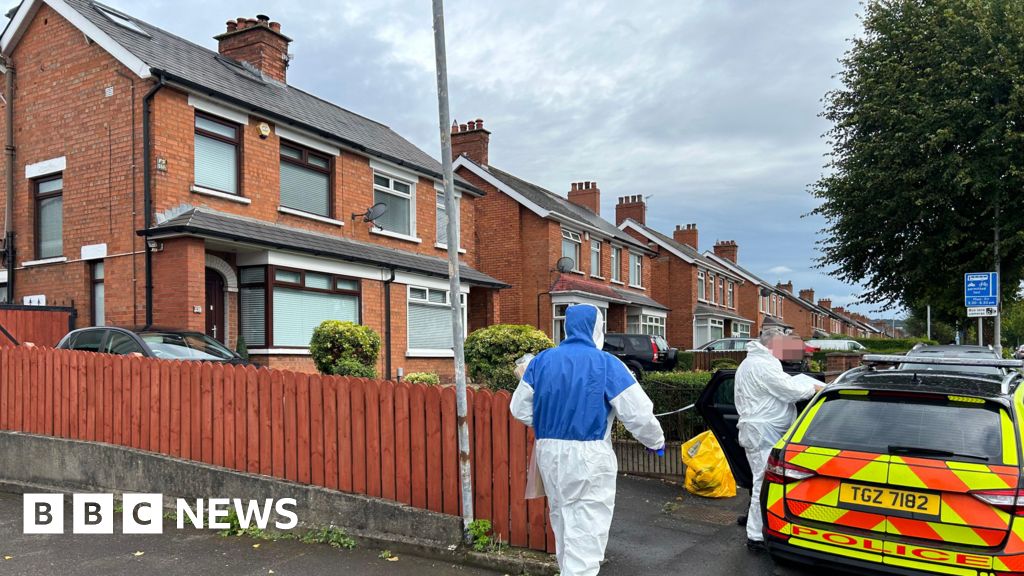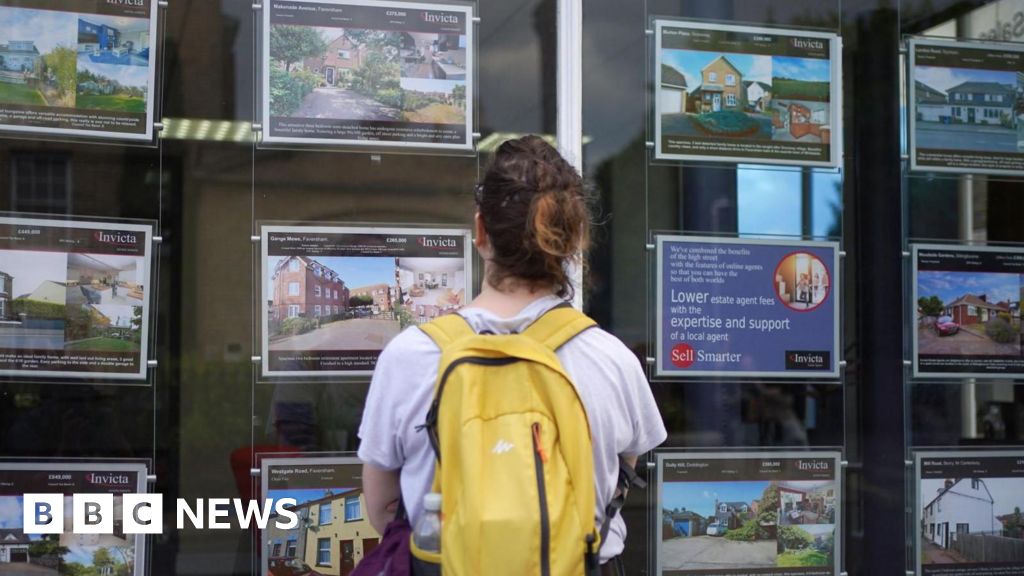Politics
Ministers and union leaders to hold crunch talks over workers’ rights plans | Politics
Trade union leaders will meet senior ministers on Saturday for crunch talks on the government’s workers’ rights package, as the government looks to head off a potentially damaging row at Labour conference.
General secretaries from the 11 unions affiliated to Labour will meet Angela Rayner, the deputy prime minister, and Jonathan Reynolds, the business secretary, on the eve of conference to thrash out details of the package, sources have told the Guardian.
With just weeks to go until ministers are due to publish their proposals and several points of dispute still outstanding, ministers are hoping to avoid a damaging row with union backers so soon into the new government. Labour has promised to come forward with its proposals in the first 100 days of government, giving a month to do so.
One person briefed on the meeting’s agenda said there were still “a number of points of departure” between the government and unions, but that ministers were hoping to emerge with a final agreement. The person said ministers were hoping to emerge with a message of “peace in our time”.
Whitehall sources acknowledged there were still points of contention about the details of the bill, but expressed confidence they would be cleared up before the proposals are made.
Rayner has placed the workers’ rights package at the heart of what she wants to achieve in government, promising that Labour will give workers better pay and more security at work.
Among the promised measures are restrictions on zero-hours contracts, giving employees full rights from “day one” of their employment, and ending the practice of companies firing workers only to rehire them on worse terms.
Labour launched the idea of a package of stronger workers’ rights while in opposition in 2021. Since then however many unions feel the party has been trying to water them down under pressure from employers, and more recently, the Treasury.
Similar talks were held in May, when Labour tried to make changes to the proposals as shadow ministers finalised the text of their manifesto. Unions successfully resisted those changes, but those involved in the discussions say the areas of disagreement remain.
One area of dispute has been over zero-hours contracts. Ministers have now agreed with unions that workers should be able to sign a zero-hours contract if they would prefer one.
But some general secretaries are concerned that by promising to ban the imposition of “exploitative” zero-hours contracts it could leave room for some companies to claim their particular contracts are not exploitative.
“Our position is that that is an open door,” said one union source. “How do you define exploitative?”
Another point that needs to be agreed is whether companies should be allowed to impose a probationary period before workers get their full rights, and if so, how long.
Some unions want no probationary period at all, arguing that having one would undermine workers’ rights to participate in collective bargaining agreements with their colleagues.
Ministers have been divided over the issue, with Rayner pushing for a limited probationary period of around three months and Reynolds and the Treasury pushing for a much longer one of up to a year. The ministers are now reported to have agreed a compromise position of six months, but some union officials say this will still cause problems with their members. “That is a line in the sand for us,” said one.
Finally the two sides are in dispute over whether companies should be allowed to fire and rehire workers if they are faced with bankruptcy.
Ministers believe it is important that struggling companies are allowed to put workers on lower pay if the alternative is to make them redundant, but some in the union movement believe the concession will be exploited by employers.
Government officials however point out that bills put forward by Labour members of both the House of Commons and the House of Lords contained some allowance for companies to use the practice in certain limited circumstances. Both bills won the support of trade unions.
Politics
Warning to Keir Starmer – you are a Labour prime minister, not a ‘red wall’ one. Remember that | Andy Beckett
With every difficult day Keir Starmer’s government has to navigate, the ease of its election victory only two months ago feels more and more extraordinary. Despite winning only a mediocre 33.7% of the vote, Labour gained 211 seats, the most by any party since 1945, and reduced the Tories to a rump barely half that number. These achievements will be mythologised and analysed by Labour members and strategists for decades to come.
Probably the most startling success of all was in the “red wall”. According to the research firm Focaldata, whose analyst James Kanagasooriam first identified this supposedly pivotal electoral zone in 2019, Labour won 37 of its 38 seats. The party had lost a majority of these former strongholds to the Tories during the 2010s, a loss widely seen at the time as hugely damaging and possibly permanent, but on 4 July 2024 that trend was spectacularly reversed. Starmer’s decision to shape his leadership largely around winning back patriotic, often socially conservative red-wall voters who want tight controls on state spending and immigration – an approach you could call red-wall Labourism – seemed to have been completely vindicated.
Yet two months on, can we be quite so sure? With more election data now available, and the new government’s strengths and weaknesses becoming apparent, the true nature of Labour’s red-wall triumph, and its ambiguous consequences for Starmer’s premiership, can begin to be discerned.
The first striking detail is how few extra red-wall voters Labour actually attracted at the 2024 election. According to Focaldata, the party’s vote share there only increased from 38% to 41%. Far more voters switched from the Conservatives to Reform, and this split on the right was mainly responsible for Labour capturing so many seats. Encouraging and exploiting such a split was part of Labour’s strategy: a forthcoming book on the election by Tim Ross and Rachel Wearmouth says the party deliberately did not campaign much against Reform. But with Reform now second behind Labour in 89 seats, in the red wall and beyond, and Reform’s favourite issue, immigration, often dominating politics since the election, usually to the government’s discomfort, the wisdom of Labour’s decision not to take on the party during the election is increasingly open to question.
So is how much Labour’s red-wall gains really contributed to its election win. According to Focaldata, fewer than a seventh of the seats the party captured were in the red wall. This suggests Labour could have won comfortably without them.
Starmer and his strategists say their red-wall campaign had a value beyond that battleground. Labour’s centrist or even rightwing red-wall messaging, its reverence towards “hero voters” who switched back from the Conservatives to Labour – these former supporters of catastrophic Tory governments could be described in less complimentary terms – was a necessary and successful way of signalling to voters across the country, Labour argues, that it was “a changed party”, as Starmer constantly describes it.
Yet that change has had costs. Labour’s election landslide had a hollow quality, with so much support seeping away to the Greens, Lib Dems and leftwing independents that its vote share was the lowest of any winning party for a century. Since the election, much of what the government has said and done about state benefits, public spending and immigration has continued to alienate leftwing and liberal voters.
This approach may not be electorally fatal, if the Tories remain too inward-looking and extreme for most voters and the split on the right continues. But it is already strengthening the right in a deeper sense, by echoing and legitimising some of its preoccupations. Starmer’s praise this week for the “remarkable progress” of the far-right Italian premier Giorgia Meloni’s authoritarian approach to refugees means that the next time Nigel Farage says something vile about immigrants, it will sound more respectable to mainstream voters.
The downbeat mindset of red-wall Labourism also risks boxing the government in. In the political analyst Deborah Mattinson’s book Beyond the Red Wall, published shortly before Starmer hired her as his head of strategy (a post she held from 2021 until the election), red-wall voters are presented as sceptical about multiculturalism and enthusiastic about politicians who are “tough on crime”. In his response to this summer’s race riots, Starmer almost exclusively emphasised law and order, rather than also taking the opportunity to stand up for this country’s ethnic and religious diversity and to call out multiculturalism’s over-pessimistic, often prejudiced critics.
The priorities of British governments are often distorted by excessive attention to swing voters. One of the reasons Tony Blair’s administration did not sufficiently challenge the deregulated Thatcherite economy it inherited, with ultimately disastrous consequences in the financial crisis, was that he did not want to alienate the new working-class entrepreneurs and property owners who had been among Thatcherism’s beneficiaries, who had acquired a rosy view of the free market as a result and who often lived in marginal seats. Likewise, Starmer’s government risks being too conservative because conservative voters loom too large in its calculations, blotting out the concerns and electoral potential of other Britons.
There are areas of government activity where the cautious approach of red-wall Labourism does not seem to apply, such as workers’ rights, renters’ rights and climate policy. Because red-wall Labourism, like the Labour right in general, is quite negative, surer of what it is against – the left, identity politics, London’s dominance – than what it’s for, it has not been able to supply enough policies to fill the government’s agenda. And as a fairly inexperienced politician who considers himself a pragmatist, Starmer sees having ministers with a range of outlooks as necessary, at least for now.
But the pressure will always be there from voter-obsessed advisers such as Morgan McSweeney to make the policies of relative radicals such as the energy minister, Ed Miliband, more palatable to former Tories in the red wall and elsewhere. If the government prioritises this minority of voters too much, and causes Labour’s overall support to narrow further, the next election will be tight, or worse. And then the retaking of the red wall, like Labour’s huge 2024 landslide, will be remembered by the party with ambivalence as well as fondness: as a tactical triumph, but a one-off.
Politics
Labour has ‘big hill to climb’ to win next Scottish election, says Ian Murray | Scottish politics
Labour faces big challenges to win the next Scottish election because of the “dire” economic situation and the country’s volatile electorate, the Scotland secretary has said.
Ian Murray said the Labour government and the wider party had to accept they had “a big hill to climb” to regain power in Holyrood in elections scheduled for May 2026.
He will tell delegates at the party’s annual conference in Liverpool that they cannot assume Scottish voters will deliver a landslide election victory as they did in the Westminster elections this year unless Keir Starmer’s government can prove Labour deserves it.
“The message to delegates is that we’ve come a long way, we’ve done exceptionally well, but the electorate in Scotland hasn’t come home. They’ve lent us their vote … to kick out the Tories and deliver the change that was in our manifesto,” Murray said.
“We need to show the electorate that we can deliver and that’s going to be tough between now and 2026. But the direction of travel from the government already has been hugely positive. That’s the message.”
Murray said it was “drilled into everyone” in the prime minister’s cabinet that winning the Scottish and Welsh devolved elections in 2026 was the “gateway” to a second Labour government at Westminster.
Yet the party had to remember Scotland’s electorate was the most volatile of any in the UK, he said, illustrated by Labour’s sharply fluctuating fortunes there.
The party won 41 Scottish seats in the 2010 general election, but held only one of those in 2015 – Murray’s seat in Edinburgh South. Labour then won six seats in 2017, before going back down to one, Murray’s, in 2019.
In July, Scottish Labour won 39 Westminster seats with a higher share of the vote than at the UK level. Yet since then Scottish parliament opinion polls show Labour narrowly trailing the Scottish National party (SNP) on about 30% of the vote. Labour isthe third largest party in Holyrood, with 22 out of its 129 seats.
It needs about 50 seats to stand a chance of forming the next Scottish government but under Holyrood’s proportional voting system it has to be substantially ahead of the SNP to achieve that result.
“That’s a challenge for the UK government to deliver, but it’s also a challenge for the Scottish party to get into shape, to show that a change in the guard in Scotland is beneficial,” Murray said.
“I’m confident that we’ll get to 2026 having shown enough progress with the key priorities of the Scottish people to show that we’re a competent government.”
Starmer had started cleaning up “the almighty mess” left by the Conservative government at UK level, while the SNP’s record had been “dismal” despite its 17 years in power, Murray argued.
He defended the decision to cut winter fuel payments for pensioners on the grounds Labour had inherited “dire” public finances as well as a series of industrial crises, such as the closure of Grangemouth oil refinery, saying tough decisions had to be made.
By the next Holyrood election, Murray said, GB Energy would be set up and based in Scotland; new workers’ rights laws would be in place; Scotland’s place in UK decision-making would be strengthened; his department would be spending tens of millions on Scottish levelling up projects, and the country’s shipyards may have won a big Norwegian frigate contract.
Labour was also fulfilling its manifesto pledge to work much more collaboratively with the SNP in Edinburgh by replacing the tense, “confrontational” relations between the SNP and successive Tory prime ministers with “professional government”, he said.
Starmer met John Swinney, the first minister, in Edinburgh within 48 hours of winning the election in July.
Murray also underlined close ministerial ties, saying there had been repeated meetings between the UK energy ministers, Ed Miliband and Michael Shanks, and their Scottish counterpart, Gillian Martin, to devise a rescue plan for Grangemouth, while Wes Streeting, the UK health secretary, was “never off the phone” with Scotland’s health secretary, Neil Gray, and Peter Kyle, the science and technology secretary, was in frequent contact with Scottish universities.
The collapse of the SNP’s efforts to force a second independence referendum had caused a “big shift” in Scottish politics, he said. “Resetting the relationship is now much easier. That constitutional argument has been set aside. It’s no longer a priority for either government or the public.”
Politics
Fear and sanctions have failed to get Britain working. Why not try tea and empathy? | Polly Toynbee
Jobcentres are the “least well-used” and “least well-loved” of all public services, a failure at the heart of the economy that helps account for the biggest contraction in the workforce since the 1980s. So said the employment minister, Alison McGovern, as she launched a report from the Institute for Employment Studies, a commission she worked with closely. It makes a fierce critique of the system as it stands. She packs a punch, rejecting a system in which all the blame falls on the individual and that ignores social obstacles: the millions of people waiting for NHS treatment, the absence of childcare, the lack of buses to work, age discrimination, and punitive jobcentre work coaches instructed to push people into “any old job”, however dead-end and insecure.
Promising a radical “culture change”, which will re-badge the government’s approach as a jobs and careers service, McGovern will throw the doors open for all. By only taking benefit claimants, jobcentres have had a stigma that deters employers as well as jobseekers. Work coaches will become advisers, trained to offer universal careers guidance. There may even be hot drinks, making this a service based more on tea and sympathy than fear and sanctions (stopping benefits). Yes, there will always be “conditionality”, but watch the balance shift rapidly towards help. Here’s how bad it is: half a million people who are in employment currently have to attend a jobcentre every week to prove they spent 35 hours either working or seeking more hours or better-paid jobs; their partners are called in to attest to their own job-seeking. Abandon that compulsion on the already employed and 2,500 advisers will be freed up to offer deeper, better consultations – finding options, easing obstacles, offering training – with less time spent policing benefits.
This bullying culture was at its worst a few years ago, when I was told that coaches were told to get 50.5% of claimants off benefits. In a secret interview with an outraged staff member, I reported on the tricks played, especially on people with mental illness or learning disabilities. People were told to re-apply for employment and support allowance, but the jobcentre was forbidden to stock the necessary forms. As claimants approached the target deadline of 65 weeks on benefits, advisers were told to report them to the fraud department for maximum pressure. Letters were sent to the vulnerable who didn’t legally have to come in, but in such ambiguous wording that they looked like an order to attend.
Managers, themselves under pressure, bullied staff to explain why they hadn’t sanctioned more people. They deliberately made the process of claiming a frightening hell. No wonder jobcentres are reviled. But it wasn’t always thus. In 1997, Labour revolutionised them: they took away the screens, retrained and upgraded employment staff, and brought in a new deal for young unemployed people that offered an array of options and chances. It had an instant effect, especially in getting young people and single mothers into work, as carrots worked better than sticks. Next month, a white paper will announce similar reforms.
There are about 900,000 more people off work than would have been on pre-pandemic trends – “more people than Tesco, Sainsbury’s and Asda employ put together,” Wes Streeting, the health secretary, said on Wednesday as he launched an Institute for Public Policy Research report on the economic damage done by poverty and ill-heath. The UK is one of the only rich countries to see employment fall post-Covid, costing the economy £16bn a year. Many of those out of work are young people with mental health problems who have never worked.
How did it happen? Let me count the ways: early on, the 2010 government all but abandoned the careers service, which is now mostly online. Most of Labour’s local Connexions services for young people shut. Sure Start was torn apart, and no longer sets families on their feet from children’s earliest years. School budgets were cut and the exam system fixed to brand nearly half of pupils failures. Post-pandemic recovery money for extra tuition was denied. The 40% of students who fail one of GCSE English and maths are forced to resit the exams until they reach 18. FE colleges giving them vocational courses get no funding for anyone not resitting, needlessly alienating many: few who fail the first time pass these miserable resits. Then the government started abolishing BTecs – hundreds of vocational courses that could open new doors and vistas to those pupils half-failed by school. These courses that were well understood by employers were replaced with T-levels, which are too hard for many. Labour looks set to restore them.
I visited the London South East further education college in Bromley, in a week when universities in England pleaded for more funds. Asfa Sohail, the executive principal, can’t help but feel indignant. Where English universities get £9,250 in tuition fees per student, she has £6,000, and many of her students are severely deprived: “Some live on one meal a day. Do universities cope with gangs, knives and drug dealers? Yet our teachers are paid 23% less than school teachers, though they are counsellors, too, with more contact hours, advising on mental or financial problems.”
Take a walk round a good FE college like this, and you see students learning everything from plumbing and carpentry to early-years teaching, IT and animation, hair and beauty, alongside academic subjects: it feels like hope for many to find what they want to do. These gardens of second chances, neglected and downgraded since 2010, are, Sohail says, unvisited by politicians whose children head for university. Despite a desperate need for people trained in health and social care, she is turning students away. How can she recruit and retain staff when she lost six health and social care teachers in this department at the end of the summer term to schools paying £6,000 more with better holidays? This bottleneck denies students places and fails to fill thousands of job vacancies.
Labour has bound itself to reach a phenomenally ambitious 80% employment rate. Can it be done? So much depends on reviving the NHS, at a time when the number of incapacity benefits claimants in the UK is increasing faster than in any country in Europe, as the Institute for Fiscal Studies reports. British jobseekers are the least likely in Europe to use a jobcentre. Transforming them from places of harassment to help, and allowing people to try jobs without instantly losing benefits, could turn around this alarming epidemic of worklessness. It did last time.
Politics
U.S. keeps missile system in Philippines as China tensions rise

U.S. and Philippine troops fire a High Mobility Artillery Rocket System during live fire exercises as part of US-Philippines army-to-army joint drills on March 31, 2023 in Laur, Nueva Ecija, Philippines.
Ezra Acayan | Getty Images News | Getty Images
The United States has no immediate plans to withdraw a mid-range missile system deployed in the Philippines, despite Chinese demands, and is testing the feasibility of its use in a regional conflict, sources with knowledge of the matter said.
The Typhon system, which can be equipped with cruise missiles capable of striking Chinese targets, was brought in for joint exercises earlier this year, both countries said at the time, but has remained there.
The Southeast Asian archipelago, Taiwan’s neighbor to the South, is an important part of U.S. strategy in Asia and would be an indispensable staging point for the military to aid Taipei in the event of a Chinese attack.
China and Russia have condemned the first deployment of the system to the Indo-Pacific, accusing Washington of fueling an arms race.
China’s foreign ministry said on Thursday it was very concerned about the plan to keep the system in place.
“It seriously threatens the security of regional countries and intensifies geopolitical confrontation,” ministry spokesperson Lin Jian told a press briefing.
The deployment, some details of which have not been previously reported, comes as China and U.S. defense treaty ally the Philippines clash over parts of the hotly contested South China Sea. Recent months have brought a series of sea and air confrontations in the strategic waterway.
Philippine officials said Filipino and U.S. forces continued to train with the missile system, which is on the northern island of Luzon, facing the South China Sea and is close to the Taiwan Strait. They said they were not aware of immediate plans to return it, even though the joint exercises end this month.
A Philippine army spokesman, Colonel Louie Dema-ala, on Wednesday said training was ongoing and it was up to Philippine authorities and the United States Army Pacific to decide how long the missile system would stay.
“It is up to the higher headquarters to decide on its stay, and most importantly the USARPAC because they own this, it is not our capability,” he told Reuters.
A public affairs officer for USARPAC said the Philippine army had said the Typhon could stay beyond September and soldiers trained with it as recently as last week, engaging “in discussions over employing the system, with a focus on integrating host nation support.”
A senior Philippine government official and another person familiar with the matter said the U.S. and the Philippines were testing the feasibility of using the system there in the event of a conflict and how well it works in that environment. Both spoke on condition of anonymity.
The government official said the Typhon – which is intended to be mobile and moved as needed – was in the Philippines for a “test on the feasibility of deploying it in country so that when the need arises, it could easily be deployed here.”
The office of Philippine President Ferdinand Marcos Jr did not respond to a request for comment.

The U.S army flew the Typhon, which can launch missiles including SM-6 missiles and Tomahawks with a range exceeding 1,600 km (994 miles), to the Philippines in April in what it called a “historic first” and a “significant step in our partnership with the Philippines”.
A satellite image taken on Wednesday by Planet Labs, a commercial satellite firm, and reviewed by Reuters showed the Typhon at the Laoag International Airport, in Ilocos Norte province.
The senior government official who spoke to Reuters said there were no immediate plans to withdraw it.
“If ever it will be pulled out, it is because the objective has been achieved and it may be brought (back) in after all the repairs or the construction would have been done,” the official said, adding that there was strategic value for the Philippines in keeping the system to deter China.
“We want to give them sleepless nights.”
The U.S. has been amassing a variety of anti-ship weapons in Asia, as Washington attempts to catch up quickly in an Indo-Pacific missile race in which China has a big lead, Reuters has reported.
Although the U.S. military has declined to say how many will be deployed in the Indo-Pacific region, more than 800 SM-6 missiles are due to be bought in the next five years, according to government documents outlining military purchases. Several thousand Tomahawks are already in U.S. inventories, the documents showed.
China has denounced the deployment of the Typhon several times, including in May when Wu Qian, spokesperson for China’s defense ministry, said Manila and Washington had brought “huge risks of war into the region”.
Russian President Vladimir Putin in June cited the deployment when announcing his country would resume production of intermediate- and shorter-range nuclear-capable missiles.
Philippine Foreign Affairs Secretary Enrique Manalo in July assured his Chinese counterpart the presence of the missile system in his country posed no threat to China and would not destabilize the region.
China has fully militarized at least three of several islands it built in the South China Sea, which it mostly claims in full despite a 2016 arbitral ruling that backed the Philippines, arming them with anti-ship and anti-aircraft missiles, the U.S. has said.
China says its military facilities in the Spratly Islands are purely defensive, and that it can do what it likes on its territory.
Politics
‘He could be here more’: Clacton split over Nigel Farage’s first months as MP | Nigel Farage
It happened sometime on Monday morning, locals think, though no one seems to know exactly when. But as staff in the shops on Old Road in Clacton stepped out of work for lunch, they spotted that the billboard on the corner of Crossfield Road had been ripped to ribbons.
Plenty had approved of the poster, placed there by the political campaign group Led By Donkeys, drawing attention to the huge scale of the local MP Nigel Farage’s earnings outside politics. A photo of the billboard posted on X by the group has 24,000 likes.
But someone – presumably a fan of the Reform leader – objected to the poster being stuck up in the Essex town. As one supportive comment (among many) on a local Facebook page under the same image put it: “Leave the man alone, we need him.”
Two and a half months after he was elected, Britain’s most popular, best-paid and most divisive MP is still provoking strong emotions in Clacton – many of which remain firmly positive. “I think there’s a lot of support for him because people like him,” said Jenny, a youthful octogenarian who was walking her small dog Milo near her home.
Though she tutted at the vandalism of the poster – as well as the amount of dog poo in the street – she was untroubled by its message that Farage made an additional £130,000 in his first month as an MP. “I don’t really understand things like that. I voted for him because of his beliefs. I think what he said is true,” she said. Which beliefs in particular? “Immigration has got to be thought more of. You can’t keep bringing people in.”
“Don’t they all have second jobs?” shrugged Sharon Gittings, a recently retired operations manager who had switched to Reform in July after a lifetime voting Conservative. “I’m just hoping he will be good for Clacton. We could do with someone who brings attention to the town.”
Which is not to say everyone agrees or approves of the MP’s record so far. Farage has held no local surgeries to date and has not yet set up an office in the constituency. Beyond a bald Clacton Reform email address (he also has a parliamentary profile page), he has published no specific guidance on how to get in touch on local matters, and some residents say they have tried repeatedly to reach him without success.
“I have emailed him on both his addresses four times requesting confirmation of when he will hold a clinic in Clacton, so I can get an appointment to speak to him,” wrote one constituent in a letter to the Daily Mail. “I have not received even an automated reply.”
Even among those in the constituency who are warm to the MP, there is much debate about how much time Farage has actually spent there – not least given his three visits to the US since the general election. (Next week he will address a “capitalist summit” in Kuala Lumpur; Reform says this is a long-term diary commitment and will take place during parliamentary recess.)
Farage said this week that he spent “a couple of days every week” in his constituency and was in the process of buying a house there. “Well, that would be good then,” said Paul Estall, a former pub manager who now works in education. “If you have been elected you need to be available, even if it’s by phone. Otherwise, what’s the point?”
One thing the MP has been eager to trumpet in his social media and targeted local Facebook ads is his response to a fire in the deprived Clacton suburb of Jaywick, in which five tiny, timber-framed houses were gutted. Farage has tweeted about the fire, mentioned it in his column in the Clacton Gazette and recorded a slick video showing him visiting local fire stations to thank those who put it out.
But some of those affected by the 8 August fire are unimpressed with the MP’s response. The Guardian spoke to Claire Fitzpatrick, who along with her partner and five children was made homeless when the blaze engulfed her house. Fitzpatrick’s seven-year-old fled the flames, and the family have been given emergency accommodation in a hotel in Clacton.
Farage visited the scene several days after the fire, when by chance Fitzpatrick’s partner was there. She said the MP “shook his hand and said ‘I promise I will help’. We gave him my mobile number and we’ve heard nothing back from him. I emailed him and heard nothing.”
Fitzpatrick said she knew housing was the responsibility of the local Tendring district council rather than the MP. “I don’t expect him to pull a house out of his arse. But help me with some advice. Go to the council. He’s on about the Jaywick fire all the time. Why have you not met me then personally? Why have you not talked to me?” she said. “He’s using my misfortune for his publicity.”
Jaywick is a fiercely tight-knit and supportive community and local businesses have rallied to the family’s aid, providing clothing and funds to help Fitzpatrick buy an air fryer and bottled water, given the family have no cooking facilities and have been told not to drink from the hotel taps, according to Fitzgerald.
Many local people believe Farage “got his seat and disappeared”, said Aaron Taylor, who runs the Sun Spa tanning salon and was briefly hospitalised after helping to evacuate homes during the fire. “We’re talking about people who can do a lot. They’re not doing a lot.”
Bradley Thompson, an independent councillor who also chairs the local community forum and food bank, said he had repeatedly asked local Reform representatives for a meeting with Farage to discuss local issues, without success. “[Farage] could be here more. He could engage with the residents and the council more. Stop going in pubs for a photo opportunity but get his hands dirty,” he said.
According to Reform, Farage is partly a victim of his own high profile. A spokesperson said the “sheer volume” of inquiries Farage had received “puts him in a different category to most MPs, given the fact that his constituents have actually heard of him”. Farage and his team were working through thousands of items of correspondence “as quickly as they can”, he said, and were holding Zoom and phone consultations until an office for in-person surgeries could be set up.
Back at Old Road, meanwhile, local people can expect the billboard to be restored shortly. Led By Donkeys has hired it for six months, and told the Guardian: “We were about to repaste it with an updated version anyway, to reflect … the cash Farage took from second jobs in August. New poster with new numbers going up soon.”
Politics
Reform can learn from Lib Dems on ground campaigning, says Richard Tice | Reform UK
Reform UK plans to mimic the Liberal Democrats in building up a national base of councillors and activists to try to expand its support, the party’s deputy leader, Richard Tice, has said before its annual conference.
While the mood in Birmingham will be celebratory, with Tice joining Nigel Farage as two of the five Reform MPs elected on 4 July, there could also be some internal dissent over a planned new party constitution, with one senior party figure saying it would allow Farage to act as an “absolute dictator”.
On Friday, the first day of the gathering, there will be speeches from all the MPs, plus Zia Yusuf, the millionaire businessman, Reform’s new chair, who is leading efforts to professionalise the party.
Tice told the Guardian the immediate focus would be on targeting the two main parties at local elections across England next May. “Not only will the Tories be in disarray but Labour will be unpopular coming out of a winter when, bluntly, pensioners will have died because of their policies. So that’s going to be a massive part of our focus,” he said.
Saturday is billed as a chance for the 3,000 activists who Tice said had signed up for the conference to join sessions about creating new branches and choosing candidates.
“We’ve got to take the professionalism to another whole gear and do the branches, because that’s how you’ve got to build up the ground campaign,” he said. “We’ve got to learn from the wonderful Lib Dems, who are very good at that. The truth is they’re the best at ground campaigning. I think we should give credit where it’s due. It’s what they’re really good at.”
Another major focus, and one that could prove more controversial, is the structure of Reform. The party is registered as a limited company, with Farage owning a majority of shares. The extent of the control this gives Farage was shown just after the election when Ben Habib, who had been deputy leader, was unceremoniously removed to make way for Tice. Tice had spent three years as leader but stepped down for Farage shortly before the election.
Tice said the party’s new governing structure would be revealed at the conference and would involve “democratisation”.
However, Habib told the Guardian the party had reneged on earlier promises to give members the right to oust their leader. “This is a rehash of a document that was rejected a year and a half ago,” Habib said. “There are changes but it actually increases the democratic deficit within Reform UK.”
He said the proposed structure included having some directors chosen from a list approved by the leader, and allowing the leader to make significant decisions between board meetings. “In other words he can be an absolute dictator. There are no checks and balances.”
Reform faces other controversies, most of them directly linked to Farage. He faced severe criticism, including from senior Conservatives, after he appeared to amplify far-right conspiracies by suggesting the police could be withholding information about the killings of three children in Southport in July.
The party leader has faced questions over his commitment as the MP for Clacton-on-Sea. He has voted just three times in the Commons so far, the same number of times as he has visited the US since the election, and spoken five times in the chamber.
after newsletter promotion
Tice defended Farage’s close links to Donald Trump, a figure who polling shows is largely unpopular in the UK. “I almost hardly ever get asked by people about Trump. Nigel’s views are well known. I’ve never met Donald Trump, but my view is that the world was a much safer place when he was president,” he said.
On Farage’s work ethic as an MP, Tice – who has spoken 16 times in the Commons since the election – said one of the issues was the arcane procedures of being in parliament.
“In the winter fuel debate, I was there for four and a half hours, bobbing up and down, to speak for a minute and 40 seconds. Some people didn’t get called at all. You could argue that’s not a great use of some people’s time, like for Nigel,” he said.
“The bottom line is, if you want something doing, give it to a busy, successful person. And Nigel is a busy, successful person. He doesn’t take holidays. He works 24/7.”
-

 Sport14 hours ago
Sport14 hours agoJoshua vs Dubois: Chris Eubank Jr says ‘AJ’ could beat Tyson Fury and any other heavyweight in the world
-

 News2 days ago
News2 days agoYou’re a Hypocrite, And So Am I
-

 News15 hours ago
News15 hours agoIsrael strikes Lebanese targets as Hizbollah chief warns of ‘red lines’ crossed
-

 Sport13 hours ago
Sport13 hours agoUFC Edmonton fight card revealed, including Brandon Moreno vs. Amir Albazi headliner
-

 Science & Environment16 hours ago
Science & Environment16 hours ago‘Running of the bulls’ festival crowds move like charged particles
-

 Technology12 hours ago
Technology12 hours agoiPhone 15 Pro Max Camera Review: Depth and Reach
-

 Science & Environment16 hours ago
Science & Environment16 hours agoHow one theory ties together everything we know about the universe
-

 Science & Environment1 day ago
Science & Environment1 day agoSunlight-trapping device can generate temperatures over 1000°C
-

 News11 hours ago
News11 hours agoBrian Tyree Henry on voicing young Megatron, his love for villain roles
-

 Science & Environment1 day ago
Science & Environment1 day agoQuantum time travel: The experiment to ‘send a particle into the past’
-

 CryptoCurrency14 hours ago
CryptoCurrency14 hours ago2 auditors miss $27M Penpie flaw, Pythia’s ‘claim rewards’ bug: Crypto-Sec
-

 CryptoCurrency14 hours ago
CryptoCurrency14 hours agoBitcoin miners steamrolled after electricity thefts, exchange ‘closure’ scam: Asia Express
-

 CryptoCurrency14 hours ago
CryptoCurrency14 hours agoCardano founder to meet Argentina president Javier Milei
-

 CryptoCurrency14 hours ago
CryptoCurrency14 hours agoDorsey’s ‘marketplace of algorithms’ could fix social media… so why hasn’t it?
-

 CryptoCurrency14 hours ago
CryptoCurrency14 hours agoLow users, sex predators kill Korean metaverses, 3AC sues Terra: Asia Express
-
Business13 hours ago
How Labour donor’s largesse tarnished government’s squeaky clean image
-

 Science & Environment20 hours ago
Science & Environment20 hours agoQuantum ‘supersolid’ matter stirred using magnets
-
News14 hours ago
Freed Between the Lines: Banned Books Week
-

 MMA13 hours ago
MMA13 hours agoUFC’s Cory Sandhagen says Deiveson Figueiredo turned down fight offer
-

 CryptoCurrency13 hours ago
CryptoCurrency13 hours agoEthereum is a 'contrarian bet' into 2025, says Bitwise exec
-

 Science & Environment21 hours ago
Science & Environment21 hours agoA new kind of experiment at the Large Hadron Collider could unravel quantum reality
-

 Science & Environment20 hours ago
Science & Environment20 hours agoHow Peter Higgs revealed the forces that hold the universe together
-

 Science & Environment16 hours ago
Science & Environment16 hours agoRethinking space and time could let us do away with dark matter
-

 Science & Environment14 hours ago
Science & Environment14 hours agoWe may have spotted a parallel universe going backwards in time
-

 CryptoCurrency14 hours ago
CryptoCurrency14 hours agoArthur Hayes’ ‘sub $50K’ Bitcoin call, Mt. Gox CEO’s new exchange, and more: Hodler’s Digest, Sept. 1 – 7
-

 CryptoCurrency14 hours ago
CryptoCurrency14 hours agoTreason in Taiwan paid in Tether, East’s crypto exchange resurgence: Asia Express
-

 CryptoCurrency14 hours ago
CryptoCurrency14 hours agoLeaked Chainalysis video suggests Monero transactions may be traceable
-

 CryptoCurrency14 hours ago
CryptoCurrency14 hours agoJourneys: Robby Yung on Animoca’s Web3 investments, TON and the Mocaverse
-

 CryptoCurrency14 hours ago
CryptoCurrency14 hours agoLouisiana takes first crypto payment over Bitcoin Lightning
-

 CryptoCurrency14 hours ago
CryptoCurrency14 hours agoAre there ‘too many’ blockchains for gaming? Sui’s randomness feature: Web3 Gamer
-

 CryptoCurrency14 hours ago
CryptoCurrency14 hours agoCrypto whales like Humpy are gaming DAO votes — but there are solutions
-

 CryptoCurrency14 hours ago
CryptoCurrency14 hours agoHelp! My parents are addicted to Pi Network crypto tapper
-

 CryptoCurrency14 hours ago
CryptoCurrency14 hours ago$12.1M fraud suspect with ‘new face’ arrested, crypto scam boiler rooms busted: Asia Express
-

 CryptoCurrency14 hours ago
CryptoCurrency14 hours ago‘Everything feels like it’s going to shit’: Peter McCormack reveals new podcast
-

 Science & Environment17 hours ago
Science & Environment17 hours agoWhy we need to invoke philosophy to judge bizarre concepts in science
-

 Science & Environment16 hours ago
Science & Environment16 hours agoFuture of fusion: How the UK’s JET reactor paved the way for ITER
-

 CryptoCurrency14 hours ago
CryptoCurrency14 hours agoSEC sues ‘fake’ crypto exchanges in first action on pig butchering scams
-

 CryptoCurrency14 hours ago
CryptoCurrency14 hours agoFed rate cut may be politically motivated, will increase inflation: Arthur Hayes
-

 CryptoCurrency14 hours ago
CryptoCurrency14 hours agoDecentraland X account hacked, phishing scam targets MANA airdrop
-

 CryptoCurrency14 hours ago
CryptoCurrency14 hours agoCZ and Binance face new lawsuit, RFK Jr suspends campaign, and more: Hodler’s Digest Aug. 18 – 24
-

 CryptoCurrency14 hours ago
CryptoCurrency14 hours agoCertiK Ventures discloses $45M investment plan to boost Web3
-

 CryptoCurrency14 hours ago
CryptoCurrency14 hours agoMemecoins not the ‘right move’ for celebs, but DApps might be — Skale Labs CMO
-

 CryptoCurrency14 hours ago
CryptoCurrency14 hours agoTelegram bot Banana Gun’s users drained of over $1.9M
-

 CryptoCurrency14 hours ago
CryptoCurrency14 hours agoDZ Bank partners with Boerse Stuttgart for crypto trading
-

 CryptoCurrency14 hours ago
CryptoCurrency14 hours agoRedStone integrates first oracle price feeds on TON blockchain
-

 CryptoCurrency14 hours ago
CryptoCurrency14 hours agoBitcoin bulls target $64K BTC price hurdle as US stocks eye new record
-

 CryptoCurrency14 hours ago
CryptoCurrency14 hours agoSEC asks court for four months to produce documents for Coinbase
-

 CryptoCurrency14 hours ago
CryptoCurrency14 hours ago‘No matter how bad it gets, there’s a lot going on with NFTs’: 24 Hours of Art, NFT Creator
-

 CryptoCurrency13 hours ago
CryptoCurrency13 hours agoBlockdaemon mulls 2026 IPO: Report
-
Business13 hours ago
Thames Water seeks extension on debt terms to avoid renationalisation
-
Politics13 hours ago
The Guardian view on 10 Downing Street: Labour risks losing the plot | Editorial
-

 Politics13 hours ago
Politics13 hours agoI’m in control, says Keir Starmer after Sue Gray pay leaks
-
Politics13 hours ago
‘Appalling’ rows over Sue Gray must stop, senior ministers say | Sue Gray
-
Business12 hours ago
UK hospitals with potentially dangerous concrete to be redeveloped
-
Business12 hours ago
Axel Springer top team close to making eight times their money in KKR deal
-

 News11 hours ago
News11 hours ago“Beast Games” contestants sue MrBeast’s production company over “chronic mistreatment”
-

 News11 hours ago
News11 hours agoSean “Diddy” Combs denied bail again in federal sex trafficking case
-

 News11 hours ago
News11 hours agoSean “Diddy” Combs denied bail again in federal sex trafficking case in New York
-

 News11 hours ago
News11 hours agoBrian Tyree Henry on his love for playing villains ahead of “Transformers One” release
-

 News11 hours ago
News11 hours agoBrian Tyree Henry on voicing young Megatron, his love for villain roles
-

 CryptoCurrency11 hours ago
CryptoCurrency11 hours agoCoinbase’s cbBTC surges to third-largest wrapped BTC token in just one week
-

 Technology3 days ago
Technology3 days agoYouTube restricts teenager access to fitness videos
-

 News16 hours ago
News16 hours agoChurch same-sex split affecting bishop appointments
-

 Politics2 days ago
Politics2 days agoTrump says he will meet with Indian Prime Minister Narendra Modi next week
-

 Politics1 day ago
Politics1 day agoWhat is the House of Lords, how does it work and how is it changing?
-

 Politics1 day ago
Politics1 day agoKeir Starmer facing flashpoints with the trade unions
-

 Health & fitness2 days ago
Health & fitness2 days agoWhy you should take a cheat day from your diet, and how many calories to eat
-

 Technology15 hours ago
Technology15 hours agoFivetran targets data security by adding Hybrid Deployment
-

 News4 days ago
News4 days agoNathan Simpson appears in court over murder of Rachelle Simpson
-

 Science & Environment2 days ago
Science & Environment2 days agoElon Musk’s SpaceX contracted to destroy retired space station
-

 Science & Environment21 hours ago
Science & Environment21 hours agoSingle atoms captured morphing into quantum waves in startling image
-

 Business3 days ago
Business3 days agoGuardian in talks to sell world’s oldest Sunday paper
-

 MMA13 hours ago
MMA13 hours agoDiego Lopes declines Movsar Evloev’s request to step in at UFC 307
-

 Football13 hours ago
Football13 hours agoNiamh Charles: Chelsea defender has successful shoulder surgery
-

 Football13 hours ago
Football13 hours agoSlot's midfield tweak key to Liverpool victory in Milan
-

 Science & Environment17 hours ago
Science & Environment17 hours agoHyperelastic gel is one of the stretchiest materials known to science
-

 Science & Environment17 hours ago
Science & Environment17 hours agoHow to wrap your head around the most mind-bending theories of reality
-

 Technology2 days ago
Technology2 days agoCan technology fix the ‘broken’ concert ticketing system?
-

 Fashion Models13 hours ago
Fashion Models13 hours agoMiranda Kerr nude
-

 Fashion Models13 hours ago
Fashion Models13 hours ago“Playmate of the Year” magazine covers of Playboy from 1971–1980
-

 News3 days ago
News3 days agoDid the Pandemic Break Our Brains?
-

 Health & fitness2 days ago
Health & fitness2 days ago11 reasons why you should stop your fizzy drink habit in 2022
-

 Politics12 hours ago
Politics12 hours agoLabour MP urges UK government to nationalise Grangemouth refinery
-

 Technology2 days ago
Technology2 days agoWhat will future aerial dogfights look like?
-

 Science & Environment15 hours ago
Science & Environment15 hours agoOdd quantum property may let us chill things closer to absolute zero
-

 Science & Environment22 hours ago
Science & Environment22 hours agoQuantum forces used to automatically assemble tiny device
-

 Entertainment11 hours ago
Entertainment11 hours ago“Jimmy Carter 100” concert celebrates former president’s 100th birthday
-

 Business3 days ago
Business3 days agoDangers of being a FOMO customer as rates fall
-

 CryptoCurrency14 hours ago
CryptoCurrency14 hours agoSEC settles with Rari Capital over DeFi pools, unregistered broker activity
-

 News11 hours ago
News11 hours agoJoe Posnanski revisits iconic football moments in new book, “Why We Love Football”
-

 Health & fitness2 days ago
Health & fitness2 days agoHow to adopt mindful drinking in 2022
-

 Health & fitness2 days ago
Health & fitness2 days agoWhat 10 days of a clean eating plan actually does to your body and why to adopt this diet in 2022
-

 Health & fitness2 days ago
Health & fitness2 days agoWhen Britons need GoFundMe to pay for surgery, it’s clear the NHS backlog is a political time bomb
-

 Health & fitness2 days ago
Health & fitness2 days agoThe maps that could hold the secret to curing cancer
-

 Business3 days ago
Business3 days ago‘I borrowed £44,000 for university and now owe £54,000’
-

 News4 days ago
News4 days agoCan the middle powers save multilateral trade?
-
Health & fitness2 days ago
Covid v flu v cold and how to tell the difference between symptoms this winter
-

 News3 days ago
News3 days agoAs Democrats fold to GOP on border policy, immigrants pay the price
-

 Science & Environment1 day ago
Science & Environment1 day agoPhysicists determined the paper most likely to give you a paper cut
-

 News4 days ago
News4 days agoBrits’ favourite history periods revealed – does yours make the list?

You must be logged in to post a comment Login